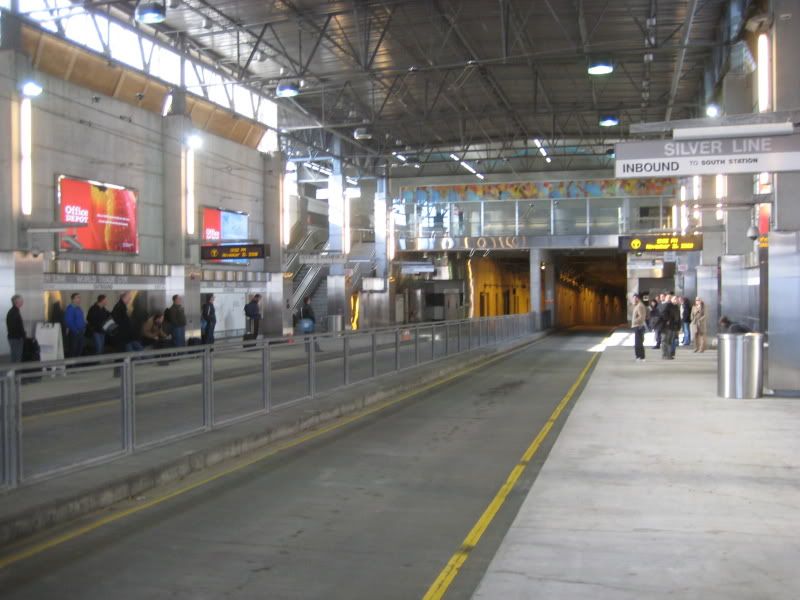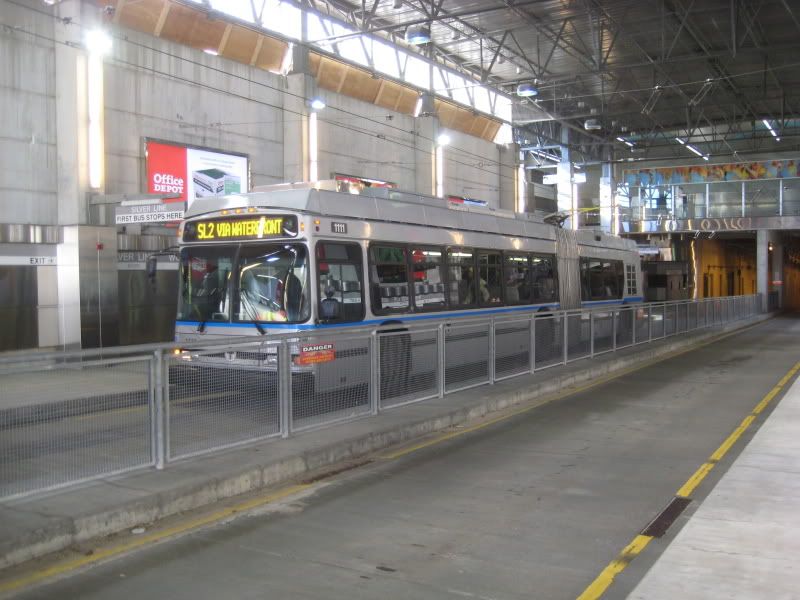Re: Silver Line Phase III
So youre fine with updated the cost of the Sl every month, but content with using a report from 2005 for your rail numbers? An unofficial report that doesnt even take into account the fact that the tunnel would be only a tiny portion of the cost?
The tunnel would not be a tiny portion of the cost, as a deep-bore tunnel through the middle of Boston is
the factor driving up costs for the Barely Rapid Transit plan currently being forced on the community.
Rail =
Rip up the entire stretch of washington street, disrupting traffic and residents for month to lay track.
A few months of inconvenience is a small price to pay to avoid decades of diesel fumes.
Purchase brand new vehicles.
Trains last longer than buses. It would be an investment that would pay off in the long-term. Your average MBTA bus is kept in service for about 12 years. The Type 7s on the Green Line haven't even had their first overhaul 22 years into their operational life.
LRT vehicles also hold more people which requires fewer vehicles to be purchased.
Rip up entire Sl tunnel pavement to lay tracks.
The SL tunnel pavement is already failing. It's deeply-rutted and gives the Silver Line a dirt-road ride quality.
Rip up south boston to lay tracks.
Rip up all of South Boston or a few lanes on a couple of streets?
Require buses anyway to get to the airport.
Seattle has figured out how to run a mixed train-bus tunnel. I'm sure Boston can make that work too.
And the problems the SL has posted in the report, like cars in the bus lanes?
It will be worse with rail, because a trolley cant swerve around obstacles. If a car breaks down on the tracks....in come the buses to substitute service.
The E line manages to function in the street without any major crises. Actual law enforcement is the key to keeping the lanes free. And if ANY train line breaks down they send out the buses. I'm not sure what the issue is here.
1) Its cheaper. This is a fact which Arborway closes his eyes to.
It's not cheaper. The numbers for digging a deep-bore tunnel through Boston keep growing by the hundreds of millions.
2) Its backed by the feds = free money
For the time being, due to the BRT-bias of the Bush administration. The state is still expected to come up with hundreds of millions of dollars that is only growing as the costs rise. If the costs were lower due to a more sensible plan, then the state's share would be smaller.
3) Buses can get to logan, trains cant.
See above.
4) Less community opposition. Boston residents do not want trains in the street. See A line and E line.
The Silver Line BRT plan has virtually ZERO community support. People have been clamoring for rail since 1987. The A and E lines are terrible comparisons as they both had and in the case of the E, continues to have a great deal of community support.
Hell, E line restoration was actually
funded. The T just refused to do anything with the money it was given.
Did they install wires in the Ted Williams? I know they had/have a designated Silver Line lane or something of the sort in it...
Nope. It's interesting to note the SL manages to travel faster on surface streets and the Ted Williams than it does in its own reserved transit way.



